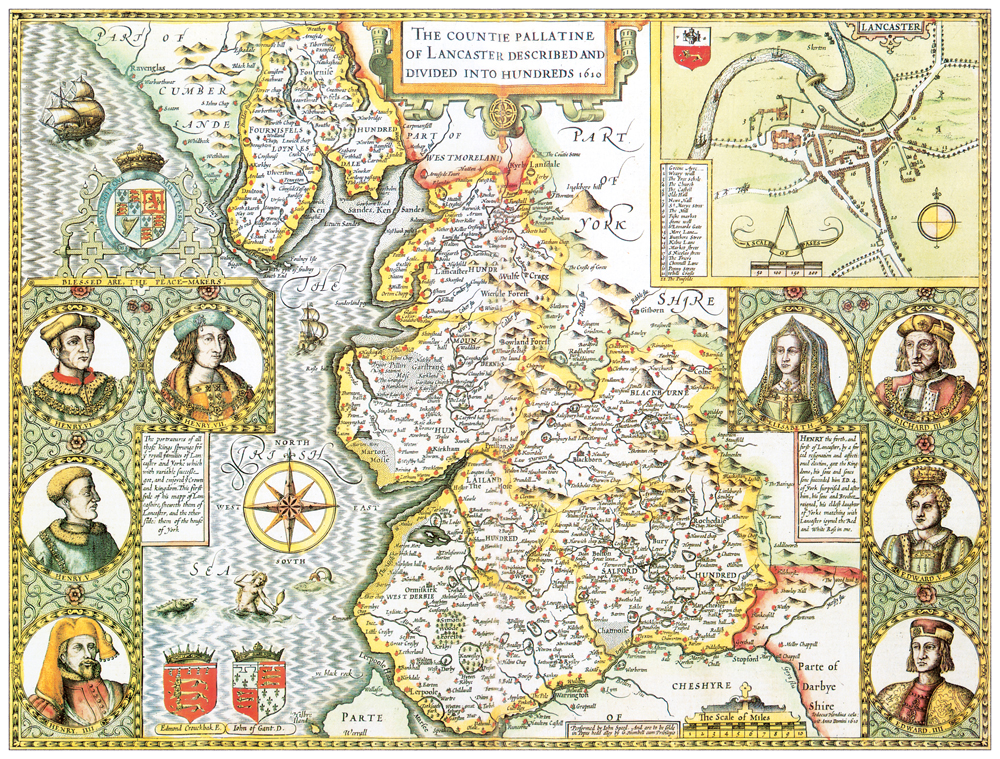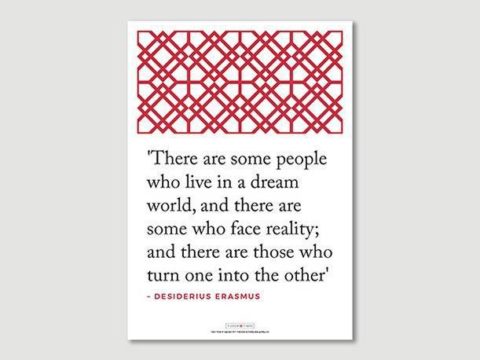Britain’s Tudor Maps: County by County
The late sixteenth century saw an explosion of map-making. The most famous cartographer of the period was John Speed, and many of us will have seen a framed copy of one of our own county on the wall of a local pub.
Britain’s Tudor Maps: County by County brings all of the maps together again in a beautifully bound book. The A3-sized book is something to treasure as an object in itself. The covers are solid, thick board, the end papers an elegant shade of blue, and the paper thick and glossy. The smell of a high quality book wafts out as you turn the pages.
The introduction is by Nicholas Nicholson MP and it explains the background to Speed’s work – who had produced maps before that he drew on, where he gathered his data, and some ideas about how he might have created the engravings which were then printed. The prose, as one might expect from this experienced writer, is elegant and lucid, often quoting Speed himself. Here is a sample:
‘On the back of each map he printed a page of topographical, administrative and historical comment (not reproduced in this edition), summarizing the main monuments of the county and its chief assets, its climate, agricultural merits and its towns, making the most of all favourable fact, as if drawing up the prospectus for an American
colony. For example, in writing of Dorset’s small estuaries, he says, ‘Vessels of burden [here] discharge their rich treasures, and herself with open hand distributeth her gifts all along the south of this shore’; of the Cambridge colleges, ‘For building, beauty, endowments and store of students so replenished that unless it be her other sister Oxford, the like are not found in all Europe’; and of Warwickshire, ‘The husbandman smileth in beholding his pains, and the meadowing pastures with their green mantles so embroidered with flowers that from Edgehill we might behold another Eden’. Further praise is lavished on the towns. His plan of Bristol, for example, is annotated, ‘There is no dunghill in all the City nor any sink that cometh from any house into the streets but all is conveyed underground’; and Dublin, which he perhaps visited, is described as ‘the royal seat of Ireland, strong in her munitions, beautiful in her buildings’. He could be critical, too, for instance of Henry VIII, ‘whose hand lay with such weight upon the fair buildings [of the abbeys] that he crushed the juice thereof into his own coffers’, and in writing of ecclesiastical power in Durham, he adds the stinging remark, ‘the bishops ... have had the royalties of princes’. But his main purpose was to celebrate: his Theatre was a stage on which the glory of Britain’s past and present could be re-enacted. No period was too remote for him. Stonehenge (‘erected by Aurelius, King of the Britons, in 475 AD’) and the Picts’ Wall (Hadrian’s) are given respectful prominence, and he is keen on battles, illustrating them with armies en bloc like phalanxes, with champions in single combat outside. He can hazard the amazing guess that 67,974 men were killed at Hastings, when the total number actually engaged was about 5,000 on each side, and in the sea off Caernarfonshire he depicts a wholly imaginary fight between three ships.

Each of the original maps is then reproduced in full colour with an informative description of the county represented, written by Alastair Hawkyard. It is easy to tell that Hawkyard has studied each plate in detail, he knows the towns represented, and weaves in the historical and literary background to Speed’s perception of the counties: as, for example, he quotes More’s Utopia in the description of Northamptonshire.
I could wax lyrical about this book for some time. I love maps, and it is one of the most exquisite books I have had the pleasure of reviewing this year, but I cannot capture in words the delightful maps with their pictures of cartographers wielding compasses, the coats of arms and the dainty battle scenes.
This would be a truly welcome gift to anyone who values either books or the art of cartography.
Tudor Times received a review copy of the book.
